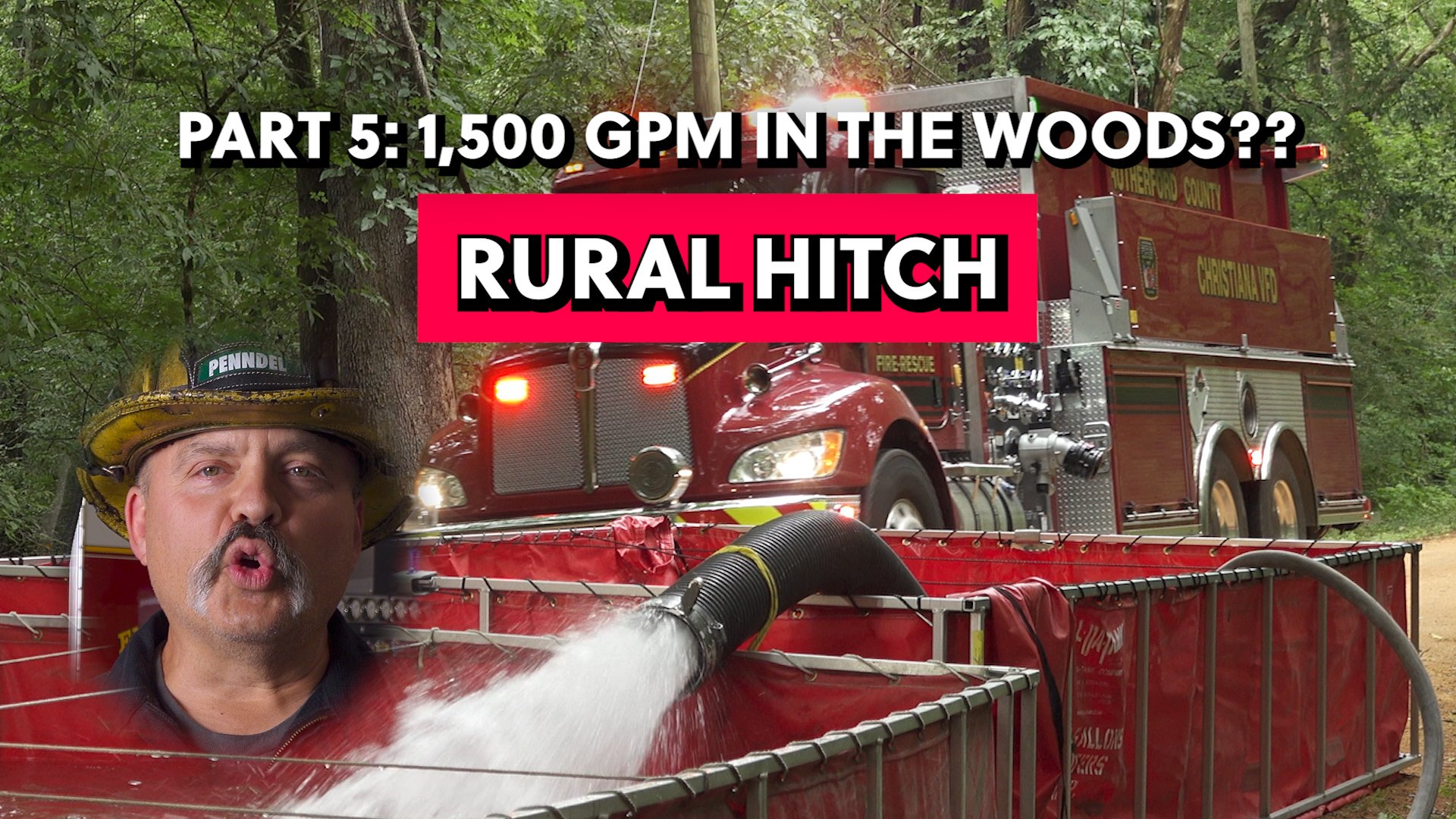Summary: To boost flow from a standard rural hitch’s 500–600 GPM to 1,500 GPM in remote settings, departments can build out a dump site as additional resources arrive. While the initial rural hitch feeds the fire, crews set up drop tanks and a dedicated dump site pumper to draft water from the tanks, allowing for continuous, high-volume operations without interrupting the primary attack line.
How to Scale a Rural Hitch to 1,500 GPM in the Woods
Fire in the sticks? No hydrant? No problem. The rural hitch is already a sharp way to deliver water from the road to the fire scene, but it doesn’t stop at 500 GPM. With the right moves, you can scale that up to 1,000 or even 1,500 GPM — even deep in the woods.
Start with the Rural Hitch
This all builds off a solid rural hitch setup. That’s your baseline — using a clappered Siamese at the road, LDH laid in by the first engine, and incoming tankers feeding it through 3" lines. This alone can give you around 500 to 600 gallons per minute of flow, which is a solid start for most rural structure fires.
Add Personnel, Add Capacity
As more help arrives, that’s your green light to scale up. Don’t wait — assign crews to start building the dump site. This is where you start to separate the water shuttle from the fireground supply and really open up your throughput.
Build the Dump Site for High Flow
Here’s where it gets tactical. Once you’ve got a drop tank on the ground, set up your dump site pumper (not the attack pumper). That unit preps to draft from the tank, giving you a steady water source independent of tanker timing.
Key steps:
-
Drop the first tank
-
Position the dump site pumper to draft
-
Make sure all connections and suction are ready before going live
Let the Next Tanker Dump
With the draft site ready, the next tanker doesn’t need to hook into the clappered Siamese. Instead, they dump straight into the tank. That’s your transition point from nursing to shuttle — and it’s how you start pushing toward 1,500 GPM.
Done right, this handoff is seamless. The rural hitch keeps feeding the fire scene, and the dump site gives you a buffer and bulk storage to sustain it. More tankers? More tanks. Just keep the site staffed and pumping.
For full video and a downloadable checklist, head to TFT.com/rural-hitch



Comments